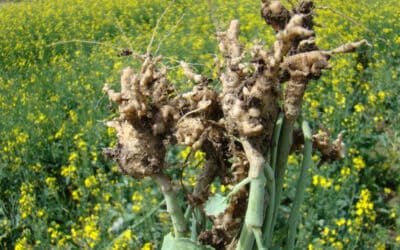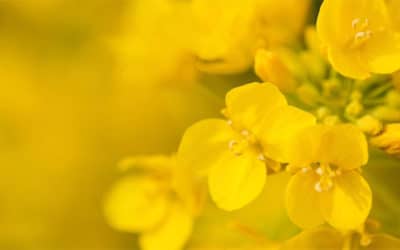Control weeds early. A combination of pre-seed weed control and one in-crop application before the 4-leaf stage of the crop is often enough to eliminate yield loss from weed competition. Canola that gets off to a good start with weed competition reduced early in the season rarely sees an economic benefit to a second in-crop application of herbicide. This been demonstrated in various studies. Clarence Swanton at the University of Guelph has a soybean study that may add to this burden of proof. The study, published in “Weed Research” in 2016, found that light reflected from neighbouring weeds will induce a soybean plant’s ‘shade avoidance response’, which leads to increased variability in yields. In short, the soybean crop — as soon as it ‘sees’ the weeds – will alter its growing pattern, putting less energy into roots and more energy into a taller stem. Swanton says, “I do think that this response could apply to canola but needs to be tested.”
Use rotation crops to manage difficult canola-competing weeds. Weed control options available in cereals and other crops can target weeds that are harder to manage — cleavers and volunteer canola, for example — in canola. Canola crops have limited pre-seed options, especially for grassy weeds. Repeated use of glyphosate on wild oats, for example, will increase the risk of selecting for Group-9 resistant wild oats. (Wild oats are already resistant to Groups 1, 2, 8 and 15, and a growing number are resistant to all four.) One benefit of crop rotation, when it comes to integrated weed management, is that various crops allow for different pre-seed and in-crop herbicide groups. Crop rotation to perennial and winter crops enhances the benefit by increasing season-long crop competition with weeds, especially in the fall and spring when annually-cropped land is often open.
IWM reduces the risk of herbicide-resistant weeds. Principles of integrated weed management (IWM) will reduce the development and build up of herbicide-resistant weeds, and improve overall results from herbicides. Narrow rows are an excellent way to speed up ground cover and improve crop competition with weeds. Row crops with 20” to 36” row spacing leaves a lot of ground open for weeds, especially through the first few weeks of the season, and increases the reliance on herbicides. Localized tillage, mowing or even hand weeding are effective to remove suspicious weeds before they can set seed. Crop rotation, as noted in the previous section, can be a very effective IWM technique, especially if the rotation crops are competitive, expand the herbicide-group options for key target weeds, and expand the months of ground cover/crop competition into early spring and late fall. See more IWM techniques in the Canola Encyclopedia.
Good weed control is good agronomy. This includes effective control in a pre-burn application using a tank mix partner with glyphosate (carfentrazone, bromoxynil, clomazone, quinclorac, etc.), establishing competitive canola plant stands, lengthening rotations, using different HT systems and, limiting combine losses (next year’s volunteer canola) and only using strategic disturbance – such as fall harrowing – to increase fall emergence and thereby reduce the spring seed bank.
More canola plants mean more weed competition. Growers using a low seeding rate may need to spray earlier or potentially twice to effectively control weed because canopy closure will occur slower.
When to use stacked-trait canola. Canola hybrids stacked with more than one HT system can enhance weed management, but should only be used if volunteers are a significant problem. While they can provide a resistance management tool if both glyphosate and glufosinate are applied, the stacked hybrids do require rotation considerations. On the topic of new genetic technology, TruFlex expands the rates and window for glyphosate on canola with the TruFlex trait. Remember to always read and follow the label directions for this and all other products.
The Canola Encyclopedia provides these best management practices (BMPs) at the top of its Weeds section.
Source: Canola Watch





